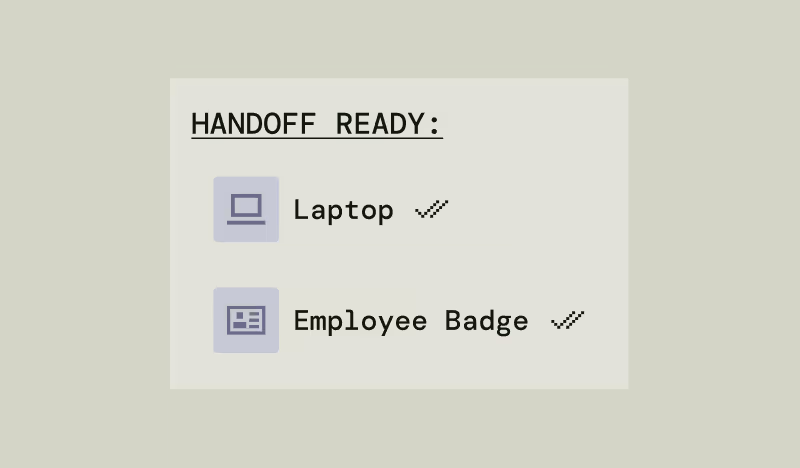



When Should Startups Start SOC 2? (And What You’re Probably Missing)
SOC 2 isn’t a checkbox — it’s the foundation for selling into enterprise. Start earlier than you think, scope beyond just Security, and put real systems in place.

Table of Content
SOC 2 is the rite of passage for startups entering enterprise markets. It’s also one of the most misunderstood hurdles. Too many founders wait until a deal is on the line before thinking about SOC 2. By then, it’s too late.
At Rovally, we’ve run this journey dozens of times. We’ve helped startups from seed stage to Series C pass SOC 2, ISO, HIPAA, GDPR, CCPA, and CMMC with zero findings, unblocking enterprise deals and giving teams time back to build.
Here’s what most blogs won’t tell you: SOC 2 is not a checklist, not a dashboard, and not a one-time project. It’s a program. Done right, it accelerates revenue. Done wrong, it stalls deals and drains engineering time.
Why Start SOC 2 Early
If you’re selling into mid-market or enterprise, the right time to start is before your first big prospect asks for it.
The SOC 2 process runs in phases:
- Type I (0–90 days): Point-in-time proof your controls exist.
- Type II (3–9 months): Observation period proving controls operate effectively.
- Annual cycle (12 months): Every year after, a rolling 12-month observation to maintain your report.
Here’s the catch: procurement won’t wait for you to catch up. If you start the process after a customer demands it, you risk deals sitting in limbo for quarters at a time.
🔎 Real story: A startup we worked with lost a six-figure contract because they assumed SOC 2 could be done in “a month.” It took six just to backfill missing systems like background checks and device management. If they had started earlier, that deal would have closed.
Why Security Alone Isn’t Enough
SOC 2 lets you scope to five Trust Services Criteria: Security, Availability, Confidentiality, Processing Integrity, and Privacy. Most startups pick Security only, because it’s the minimum.
We don’t.
At Rovally, we always scope Security + Availability + Confidentiality. Here’s why:
- Availability: Enterprise buyers want proof your service is resilient. A SOC 2 without availability coverage is a red flag.
- Confidentiality: If you touch sensitive data (and you do), customers expect to see retention and protection controls.
- Future-proofing: Expanding scope later means re-audits, new evidence, awkward customer conversations.
📈 Win: Fixify trusted us to guide them through SOC 2, ISO 27001, ISO 42001, GDPR, CCPA, and HIPAA — all passed without findings. Because their scope was strong from day one, their sales team had confidence walking into enterprise deals.
⚠️ Failure: Another startup (before they came to us) scoped Security only. Their biggest prospect asked if availability was included. When it wasn’t, the deal stalled. We had to add additional Trust Service Criteria, it took time and effort which wasn’t on the table with the prospect.
The Systems You Need Before You Talk to an Auditor
This is the part most founders underestimate. SOC 2 isn’t just about policies — it’s about whether your systems are actually secure.
Before you start, you should already have:
- Background checks on every employee and contractor.
- Infrastructure on AWS/GCP/Azure with secure defaults and IAM controls.
- Source code repo with branch protections and access controls.
- Endpoint protection + MDM for laptops (Jamf, Kandji, or similar).
- SSO/identity provider (Okta, JumpCloud, or Google Workspace) with MFA.
- Onboarding/offboarding documented and consistent (HRIS + IT tickets).
⚠️ Failure story: A founder once told us, “We’re SOC 2 ready — we bought Drata.” When the auditor arrived, they failed control after control: laptops unencrypted, offboarding inconsistent, GitHub wide open. They lost three months cleaning up the basics.
📈 Win: At CalypsoAI, we built these systems before audit day. Result? SOC 2 Type I and II passed on the first attempt, and their sales org got unstuck from months of stalled deals.
The Type I to Type II Journey (And Why Type I Matters)
Founders often ask: “Why bother with Type I if Type II is the one enterprises care about?”
Because Type I buys you credibility now. Type II builds trust long-term.
- Type I (0–90 Days): A fast win. Proves your controls exist. Satisfies most prospects who want to see intent.
- Type II (3–9 Months): The gold standard. Shows controls operate effectively over time. Unlocks serious enterprise contracts.
- Annual 12-month cycles: Once you’re in, you’re always in — compliance becomes part of your operating rhythm.
📈 Win: Turngate came to us at day zero. We got them Type I in under 90 days, unblocking their first enterprise customers. By the time those deals matured, they had a Type II in hand — credibility layered on top of momentum.
The Part Nobody Tells You
Automation vendors make SOC 2 sound like: connect AWS, get a report. That’s not how audits work.
Here’s the operator’s truth:
- Auditors sample. If you say “we disable accounts in 24 hours,” they’ll pick three ex-employees and ask for proof. One slip, one finding.
- Policies must match reality. A PDF means nothing if evidence (Jira tickets, HRIS records, GitHub commits) says otherwise.
- Engineers hate compliance. Every hour your CTO spends on screenshots is an hour not spent shipping product.
📈 Win: CalypsoAI’s engineers were wasting 10–15 hours/month on security questionnaires. We stepped in, ran the process, and unblocked their sales team. Their engineers went back to building.
Compliance Beyond SOC 2
SOC 2 is often the entry point, but it’s not the endgame. As startups grow, they layer on additional frameworks:
- ISO 27001 for international clients.
- HIPAA for healthcare data.
- GDPR/CCPA for data privacy obligations.
- CMMC/FedRAMP for government contracts.
📈 Win: Kilsar leaned on us not only for SOC 2, but also for CMMC 2.0 and FedRAMP. These frameworks are complex and resource-heavy, but with Rovally as their embedded team, they’re progressing without slowing growth.
Takeaway
SOC 2 isn’t a checkbox — it’s the foundation for selling into enterprise. Start earlier than you think, scope beyond just Security, and put real systems in place. Use Type I to buy credibility and Type II to build lasting trust.
Done wrong, SOC 2 drains your engineers and stalls deals. Done right, it accelerates growth, frees your team to build, and gives you a maturity story investors love.
At Rovally, we don’t hand you tasks. We run the program: compliance, security, and IT operations. That’s why companies like Fixify, CalypsoAI, Turngate, and Kilsar trust us to get them from zero to audit-ready — without findings, without wasted time, and without losing momentum.
Ship product. Close deals. Leave compliance to us.

Keep Building.
We’ll Handle the Rest.
Compliance, security, and IT done for you — so your startup can scale without distraction.



